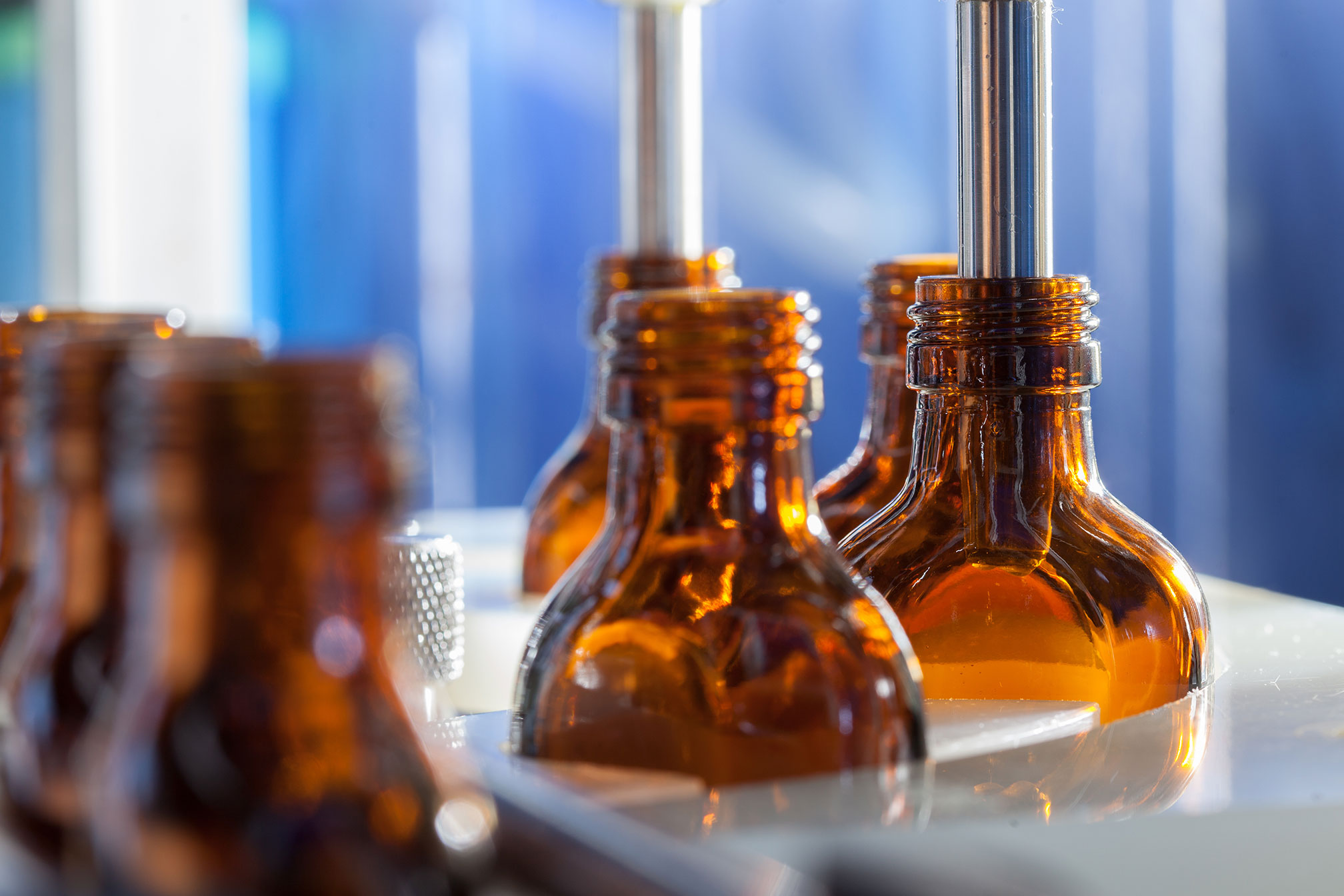
When a health product is first registered and made available in South Africa, information about its safety and effectiveness is usually only available from clinical trials. Clinical trials provide information about many of the possible adverse events associated with a health product, but do not detect all possible adverse events because they:
- usually do not continue for long enough to detect adverse events that take a long time to develop,
- do not include enough patients to detect adverse events that occur rarely and
- do not include all of the different types of people who might eventually use the product and who might be more vulnerable to some adverse events, such as older people, children, pregnant women or people with other medical conditions.
SAHPRA, like other Regulatory Agencies around the world, monitors the safety of health products to contribute to a better understanding of their possible adverse events when they are used outside the controlled conditions of clinical trials. Reports by consumers and healthcare professionals provide important information for SAHPRA’s safety monitoring program.
An adverse event could be as a result of incorrect user, interaction or other circumstances such as two properly functioning devices that do not operate as intended when used in combination. The occurrence of an adverse event does not necessarily mean that there is something wrong with the health product. Everyone can play an important role in monitoring the safety of health products in South Africa by reporting suspected adverse events to SAHPRA. To report and Adverse Drug Reaction, access our ADR reporting systems here.
What is an adverse event?
An adverse event is an unintended and sometimes harmful occurrences associated with the use of a medicine, vaccine or medical device (collectively known as health products). Adverse events include side effects to medicines and vaccines, and problems or incidents involving medical devices. Examples of adverse events are any unfavorable and unintended sign, symptom or disease associated with the use of a health product. An abnormal laboratory finding could be one example of an unfavourable and intended sign.
How can I report an adverse event?
Med Safety App is a mobile application developed to engage both patients and healthcare providers on medicines safety issues. The app is designed to simplify and promote the reporting of suspected adverse drug reactions (ADRs), including adverse events following immunisation (AEFIs) by both the public and healthcare providers. The App also allows the public and healthcare providers to learn about medicine safety news from SAHPRA, thereby creating an awareness of medicines; their potential adverse effects and pharmacovigilance.
Who can report an adverse event?
Anyone can report an adverse event. Most adverse event reports are reported by Holders of Certificate of Registration for medicines (e.g. pharmaceutical companies and medical device suppliers), but many are also reported by public and private health sectors, hospitals, healthcare professionals and consumers. Typical problems with medical devices include:
- All healthcare workers, including doctors, dentists, pharmacists, nurses, other healthcare professionals and
- Patients, consumers and community workers should be encouraged to report, preferably to the clinician who prescribed the treatment, or directly to the Authority.
- Reporters may be from either the public or private health sector.
- Other reporters may include professionals in medical laboratories and pathology departments.
Which events should be reported?
You don’t need to be certain, just suspicious!
Every report counts. While an individual report may not be enough to determine whether a particular health product caused an adverse event, all reports help to build a picture of the safety profile of a product and assist with SAHPRA’s safety monitoring program.The work of SAHPRA is based on applying scientific and clinical expertise to decision making, to ensure that the benefits to consumers outweigh any risks associated with the use of medicines, medical devices and other health products.
SAHPRA particularly needs to know:
- all suspected adverse events to new health products
- all suspected medicine and/or vaccine interactions
- unexpected adverse events (that is, adverse events that do not appear in the professional information and patient information leaflet) serious adverse events, such as those suspected to:
- cause death
- cause admission to hospital /prolongation of hospitalisation
- cause birth defects
- be life threatening
- result with significant disability or incapacitation
What information is required to report an adverse event?
Reporters are encouraged to provide as much detail as possible, but at bare minimum are asked to provide:
- patient identifier (such as initials, date of birth or age, but not their full name)
- details of the product involved (preferable a trade name of the product)
- details of the suspected adverse event (give description of the event)
- contact details for the reporter (name, address, phone number, qualification)
By providing all information relevant to a specific adverse event, you can help SAHPRA staff to assess the possible role of the medicine in causing the adverse event. SAHPRA requests contact details from people reporting adverse events so that it can seek further information about suspected adverse events (should a need arise). We do not accept anonymous reports. Providing as much information as possible when reporting will reduce the need for SAHPRA to call you and request further information.
However, it is important not to delay reporting an adverse event if some information is not available. If we need more information, we will contact you. It should also be noted that any information identifying the reporter or patient is kept confidential.
What can SAHPRA do in response to a safety concern?
If SAHPRA identifies a safety concern relating to a health product, it can take regulatory action to ensure that the medicines continue to have acceptable safety, efficacy/performance and quality for its intended use. SAHPRA also seeks to ensure that health professionals and the public are aware of the safety concerns and any changes to the availability and recommended use of the medicines.
Regulatory actions that SAHPRA can take in response to a safety concern include:
- Product labelling changes which can be addition of warnings, precautions or adverse effect in the Professional Information and Patient Information Leaflet.
- Distributing Dear Healthcare Professional Letters or publishing Medicine Safety Alerts in Medical Journals to inform healthcare professionals.
- Issuing of press releases to informing consumers.
- Limiting access to the health product by either up-scheduling, limiting prescribers and population etc.
- Suspending or cancelling the registration of the product.
- Undertaking post-marketing studies by the Holder of Certificate of Registration to investigate the safety concern if more information is needed.
Reporting safety and quality concerns
Consumers
If you are concerned that you have had an adverse effect/side effect to a medicine, or experienced a quality problem with any type of health product regulated by SAHPRA, you may need to contact your healthcare professional (a nurse, pharmacist, doctor etc) who can advise on any treatment that may be needed. They can also report the issue to SAHPRA on your behalf.
Should you wish to report an adverse event by yourself, see details below:
- Click here to access the e-reporting portal
- Alternatively, download the adverse drug reaction form and email it to adr@sahpra.org.za.
- Before completing the form kindly ensure that you first read “information regarding reporting of an adverse event” above to ensure that you provide the information required.
Healthcare Professionals
If you wish to report an adverse event or quality issue relating to the use of a health product:
- Click here to access the e-reporting portal
- Alternatively, download the adverse drug reaction form and email it to adr@sahpra.org.za or
- Use the Adverse Event Following Immunisation (AEFI) reporting form in case of a vaccine-related issue.
Please see below related Adverse Event Following Immunisation forms:
- ALL VACCINES including COVID-19: Case Investigation Form (CIF) Adverse Events Following Immunisation (AEFI) AND Adverse Events of Special Interest (AESI)
- COVID-19: Case Reporting Form (CRF) for suspected Adverse Events of Special Interest (AESI)
- ALL VACCINES including COVID-19 : Case Reporting Form (CRF) for Adverse Events Following Immunisation (AEFI)
- Adverse Drug Reactions and Quality Reporting Form
